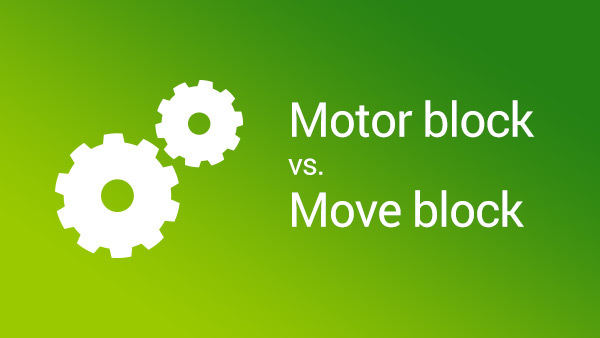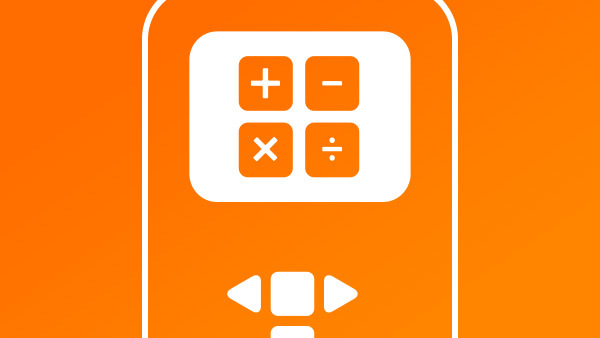
Following a line with two Hi Technic Color Sensors in EV3
As an extension to the previous video we talk about the Hi Technic Color Sensor again.
- #99
- 02 Aug 2015

As an extension to the previous video we talk about the Hi Technic Color Sensor again.

Based on a request from Abdulah we decided to build a tutorial on how to use Hi Technic Color Sensor and EV3-G Software. There is a special block imported in the software that helps you use the sensor.


"What is the light in the room?" - should it even matter. You can use one program for all lighting conditions by calibrating the color/light sensor of the LEGO Mindstorms EV3/NXT robots.

This video lesson shows a very interesting specific example on how to use the LEGO Mindstorms EV3 Ultrasonic Sensor. The sensor detects if the catapult is loaded or if we have just fired an element. At the end of the lesson I also offer an interesting challenge that you could use in your classroom or at home.


This video lesson is a revised version of Episode #1. Matt Gipson requested it in a comment. Using the EV3-G software we have developed a very simple program for following a line with two LEGO MINDSTORMS color/light sensors.

This video tutorial reviews the EV3 Gyro Sensor and the HiTechnic Gyro Sensor for the LEGO Mindstorms NXT robotics Kit. We compare the two sensors and demonstrate them in action.


In this tutorial we introduce the basic algorithm for following a line with one sensor and review the algorithm for quickly followwing a black line with one sensor, implementing both with the Mindstorms EV3 robotics kit.


After several questions about the use of the LEGO Mindstorms NXT Light Sensor with the EV3 software, we have decided to go through this problem in this video tutorial and pay special attention to the Raw Sensor Value Block.


An interesting question that has arise is whether we can use the LEGO Mindstorms EV3-G Software to program the NXT brick. In this episode we will go through the blocks from the EV3-G Software and see which works with the NXT Hardware and which does not.


A human being walks with an average speed of about 5 km/h (3 miles/h). In this video tutorial we will develop a block for LEGO MINDSTORMS EV3, that measures the speed of the robot in distance/time units where time will be configurable and could be 1 second or 0.5 seconds or any other number of seconds you pass as a param to the block. Measuring the speed of the robot is very powerful if you start building an Artificial Inteligence for your robot and is quite fun :)


Have you even tried to move the robot not in rotations or degrees or seconds, but in metres. In this episode I am building a new block that could be used to move the robot a specific number of millimetres (mm). You could directly download and use it in your programs.


We are showing the basics of communication between LEGO Mindstorms NXT Bricks using a Bluetooth connection. In the next few minutes we will build two programs - one for the master and one for the slave brick, while explaining the essentials for building such programs.

In this episode of the Basic NXT Programming series I will cover the sound sensor. I will explain how to program the sound sensor, stop on common problems faced, when the sound sensor is used and finally we will build a program that will allow us to control the robot's speed through the volume of the sound.

In this episode I will show you how to program the touch sensor part of the LEGO Mindstorms education robotics sets. I have given answers to questions like - how the touch sensor works or how you can use it.


In this video lesson I will show you how to follow a black line using just one sensor, but fast enough so that you could use it during any robotics competition without wasting any time.


In this video tutorial I give a step-by-step explanation of how to implement a block for aligning to a line. The block was first used in lesson 28. Aligning to lines is probably the most powerfull way to know the position of the robot on the FLL Competition field and to be able to execute the missions precisely at 100% of the time.


In this video we are solving Senior Solutions missions: Stove, Gardening, Similarity recognition, Ball game and Wood Working. We will make step-by-step of everything we do on the FLL field.

In this episode we are showing the great similiarity between the sensors in NXT Mindstorms. We are solving a common problem - How to make a robot that do not fall from the table. We are using the Ultrasonic sensor, Light Sensor and Touch Sensor to solve the same problem, but with three different sensors.


An advanced but understandable description of how to program the mindstorm robot to move in a regular n-gon like pentagon, hexagon etc. (Yes, we know math). We have also included notes on the used formulas. A must see for each of you who would like to master the robot movements.

In this tutorial, I will cover the adjustments of the display and the color lamp blocks from the LEGO Mindstorms NXT-G. Today I will show you how to use the color lamp in order to make your robot more interesting or how to display sensors values or try to draw something on the screen of the brick.

If you look at the properties of the move block and the motor block LEGO Mindstorms NXT, you will see that they have much in common. Still they have several differences. You should be aware of these differences in order to choose the appropriate block for your needs.


In this episode I would like to show you how to enable the communication between the computer and the NXT brick, through the USB and using the leJOS project. Starting leJOS on Windows is pretty easy. But starting the samples and achieving the communication is the actual problem.

Starting leJOS might be very problematic, since you need to install a few libraries and make some configurations. In this video tutorial I am showing a step-by-step guide on how you could install leJOS on your Ubuntu Linux. And it is quite easy.


In this episode I would like to show you a way to solve the FLL 2012 Medicine mission using an LEGO Mindstorms NXT Ultrasonic Sensor and a system of gears that converts circular motion to linear.


In episode 11 we looked at one of the most important topics for the competition - calibrating the light sensors. In this video I would like to show you how to use a more programmatic approach. This means letting the robot do the calibration on its own. Automatically.


In this lesson we build a simple LEGO Mindstorms NXT calculator program that sums, multiplies, subsctracts or divides two numbers between 1 and 50.


In this video lesson, we will show you how to build a menu as a MyBlock in LEGO Mindstorms NXG-G. Having a menu is a must at robotics competitions since it saves time and gives easy access to program functionalities.